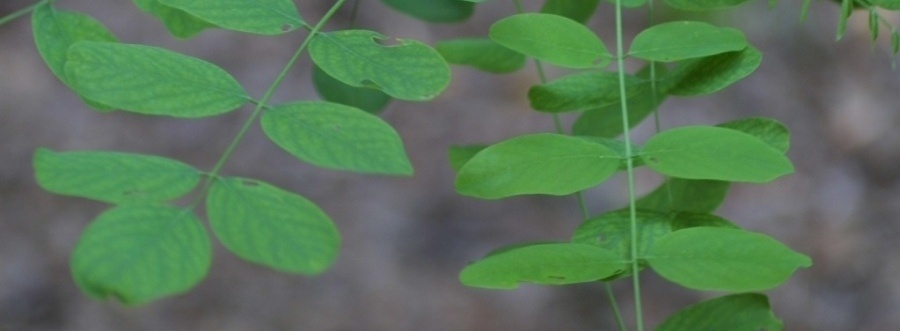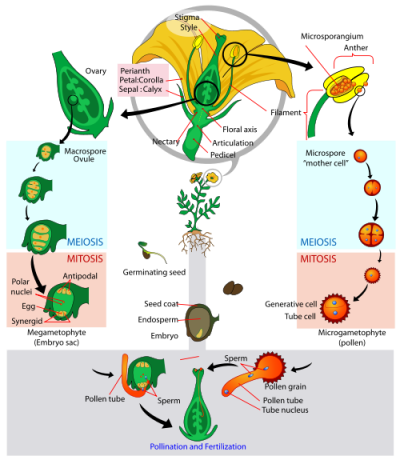
Reproduction
How exactly would Robinia pseudoacacia produce little Robinia pseudoacacia Jr.?
 This
can occur thanks to the seeds and pollen the black locust
produces.
In spring and early summer, this organism produces whit and fragrant blossoms.
These blossoms on the black locust are pollinated by bees, one such
example being the
Bombus terarius. Throughout the life cycle, the female and
male parts of the plant release microspores and megaspores, resulting in
the fertilization and then creation of a new individual. This is
displayed in more detail in the diagram to the left.
This
can occur thanks to the seeds and pollen the black locust
produces.
In spring and early summer, this organism produces whit and fragrant blossoms.
These blossoms on the black locust are pollinated by bees, one such
example being the
Bombus terarius. Throughout the life cycle, the female and
male parts of the plant release microspores and megaspores, resulting in
the fertilization and then creation of a new individual. This is
displayed in more detail in the diagram to the left.
Wikimedia Commons
 Another
important thing to note is that the in fall, Robinia pseudoacacia produce legumes, or pods, that contain
seeds. Throughout fall and winter, these pods split open, and the
seeds are dispersed primarily by wind. The photo to the right is a
close up of these legumes.
Another
important thing to note is that the in fall, Robinia pseudoacacia produce legumes, or pods, that contain
seeds. Throughout fall and winter, these pods split open, and the
seeds are dispersed primarily by wind. The photo to the right is a
close up of these legumes.
Read on to the Interactions page to learn
how the black locust gets along with other organisms.
Return Home
Steven J. Baskauf, 2002.
Bioimages